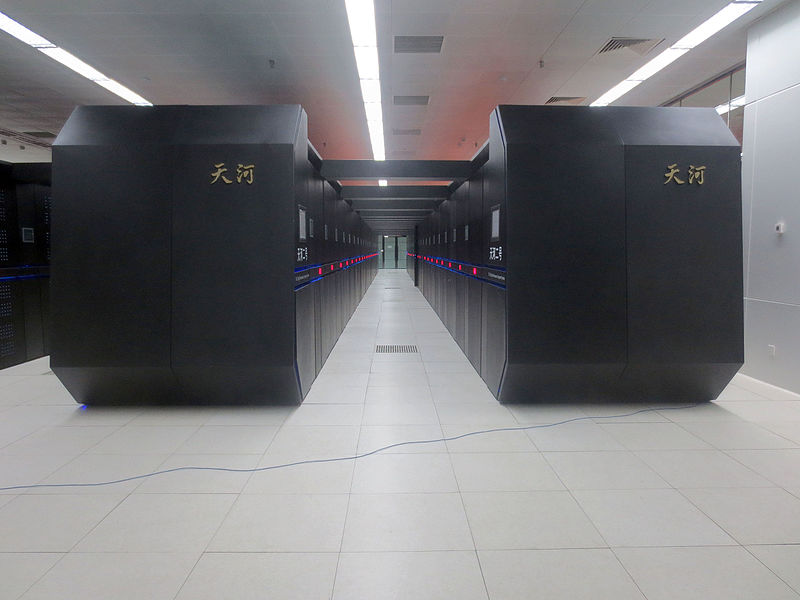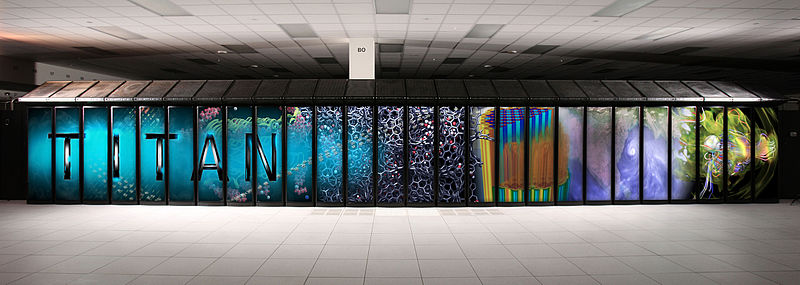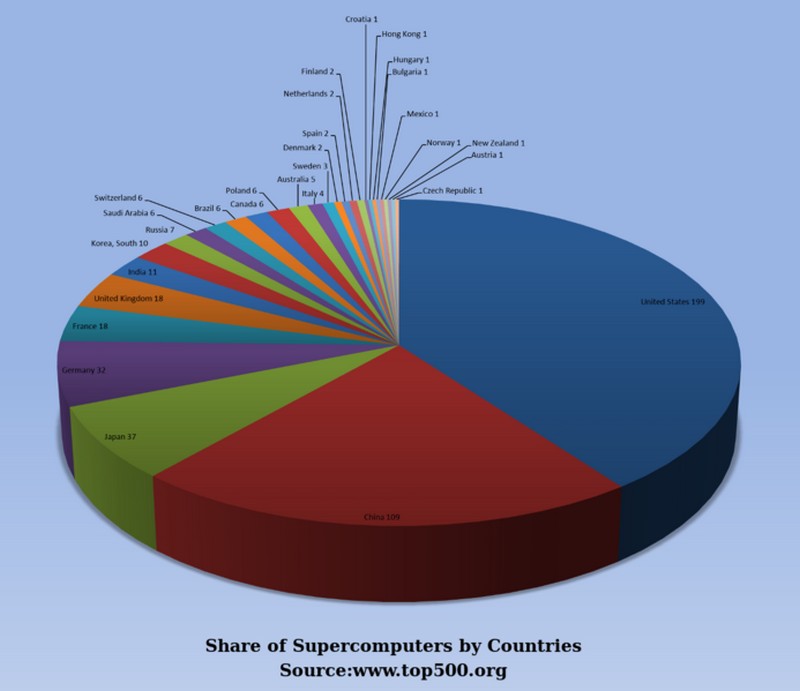China May Introduce the World’s First Exascale Supercomputer by 2018
China’s Tianhe-2 supercomputer is currently the world’s fastest computer. Developed by a team of 1,300 scientists and computer engineers, it is a 33.86-petaflop (capable of performing 33.86 quadrillion calculations per second) machine housed at the National Supercomputer Center in Guangzhou. It was developed under the sponsorship of the 863 High Technology Program of the Chinese government and is responsible for bringing back back the title of the world’s fastest supercomputer to China after Titan of the United States outperformed its predecessor, the Tianhe 1. Tianhe 2 beats Titan by almost doubling its computing capacity.
However, this reign of Tianhe 2 may may soon end as China plans to build another supercomputer. China’s National Supercomputer last week announced its plan to present a prototype of a new supercomputer that is expected to be in its final or more usable form within the next few years.
Exascale Computer
Meng Xiangfei, Applications Department head of the National Supercomputer Center of China, in an interview with Xinhua, said that they are planning on releasing a prototype for an exascale computer within the next two or three years. Yes, that’s an “exascale” or a billion billion calculations per second.
Exascale computing is considered as one of the next frontiers in the field of supercomputers aside from quantum computing. With such a supercomputer, it would be possible to do more powerful simulations, analyses, and the development of more advanced security encryptions and decryptions. While there may be criticisms over the creation of these supercomputers, it’s still worth acknowledging the kind of processing power they are able to offer. Of note, Chi Xuebin of the Computer Network and Information Centre once criticized Tianhe-2 for being difficult to use, describing it as a leader in terms of calculation capacity but noted that it is “still way behind the ones in the US and Japan.” This is because of it takes several years to write the codes necessary to make the most out of the computing power supercomputers are capable of delivering.
If the National Supercomputer Center is able to materialize its plans within the projected timeline, it will become the first ever in the world to produce an exascale computer. No other country has developed this kind of computer yet although the United States also has plans of building one. July of last year, President Barack Obama issued an executive order aimed at facilitating research on supercomputing in the United States.
Specs of China’s Planned New Most Powerful Supercomputer
Unfortunately, there are no details yet as to how powerful China’s new supercomputer would be. No information regarding the technical specifications, the chips that will be used, and other related particulars have been shared with the media at the moment. However, it is likely that China’s National Supercomputer Center will be making use of homegrown chips. Last year, the collaborative plans of Sun Yat-sen University and Guangzhou district and city administration to produce supercomputer that is twice as powerful as Tianhe-2 have been put to a halt as the United States government denied Intel’s application for an export license for CPUs and coprocessor boards.
China’s Leading Role in the Field of Supercomputers
As reported by BBC late last year, China tripled its number of supercomputers in a span of six months. Based on the reputable list compiled by Top500, China’s number of supercomputers increased by a massive 196% in less than one year. From 37, the number of usable Chinese supercomputers has jumped to 109 as of November 2015. The United States, in contrast, had its share of supercomputers reduced. While the United States still has the most number of supercomputers in the world, at 200, this number indicates a decrease. In fact, it is at its lowest level since computer scientists have started documenting and ranking supercomputers in different parts of the world.
Industry experts, however, think that the United States is not necessarily underspending on its supercomputer research. The world’s strongest superpower is still at a steady pace of supercomputer development but China’s is just doing it at a faster rate. China can afford to do so because it has the money, resources, and the multitude of companies that have evolved over time from just being mere manufacturers into organizations that already emphasize research and development endeavors.


